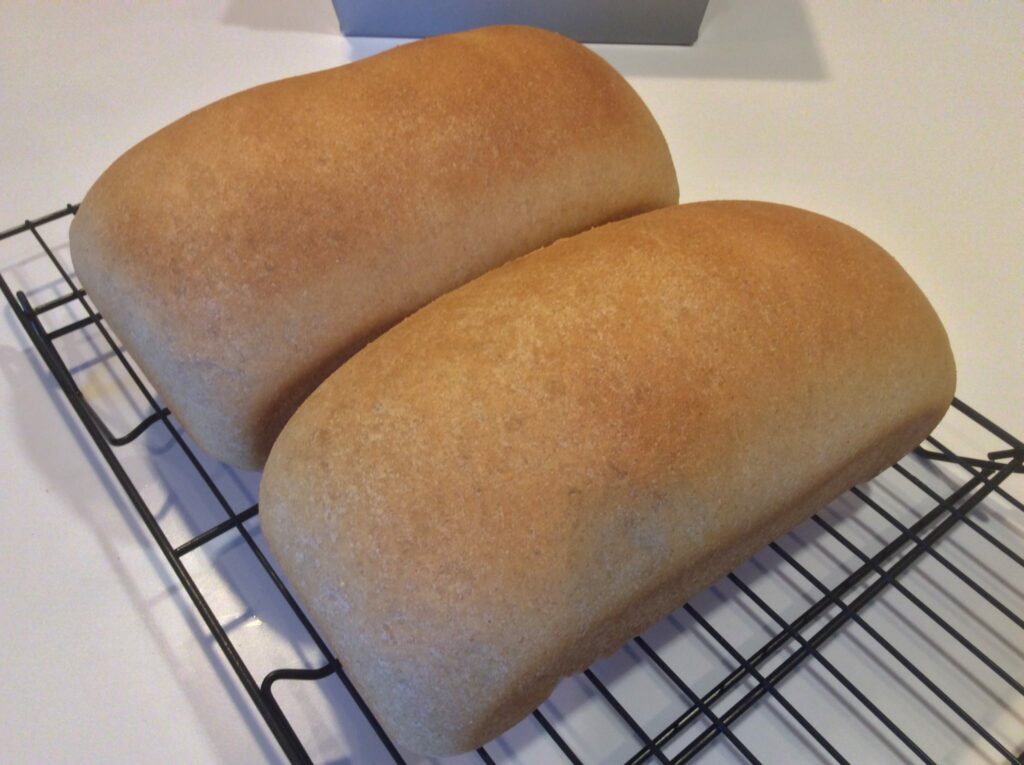
Flour, water, yeast, salt, fat and something for the yeast to eat – the basic building blocks for a loaf of American-style bread. But of course, the proportions of each element are important, too. This Honey Whole Wheat Bread Recipe provides that. It yields two, soft-crust loaves, and is perfect for the bread machine.
Why Honey Whole Wheat Bread?
I’ve talked about the benefits of whole-wheat versus white flour (see Baking With Whole Wheat Flour here). Baking with whole wheat flour introduces a few challenges if you’re used to using all-purpose flour.
Whole wheat flour contains germ and bran which soak up a lot more water than typical flour. If you see a recipe using it that doesn’t use more liquid than you’re used to (especially on Pinterest, the cornucopia of crappy recipes), you might want to look further. Typically, regular whole wheat flour will take about 5 more teaspoons of water per cup of flour. You may need even more if you’re in a dry climate like Denver. With practice, you’ll recognize the feel of a properly hydrated loaf. (Well . . . unless you’re using a bread machine, then you really are dependent upon a good recipe.)
Whole wheat flour is heavier and more dense than all-purpose flour. Because of this, the bread can have a harder time rising (the bubbles formed by the yeast have to do a lot more work lifting that heavier dough.) When the recipe calls for your dough to “double in size”, pay attention. You may need to let it rise a bit longer than you are used to. And learn to test your dough (see the great article from King Arthur flour here).
The Role of Gluten
And finally, a nicely risen loaf of bread depends on the gluten network that forms during kneading. With whole wheat flour, the bran and germ present in the dough can cut and tear at these gluten strands, making it harder for them to form that network. One way around this is to add some regular all-purpose flour to replace the whole wheat. But if you’re committed to using 100% whole wheat, I recommend adding gluten to the recipe.
I assume that if you’re even looking at a whole wheat recipe, you have no issues with gluten sensitivity, as it will be present in spades no matter what you do.
Practice makes perfect, and that’s nowhere truer than in bread making. You need to refine your recipe to your climate (dry versus humid), your preferred flour (coarse or fine-ground whole wheat, and the technique for making it “whole wheat), and your proofing temperature (on a counter, in a pre-heated oven, or in a proofing station). So, keep track of what you used and make adjustments as you go. It won’t take long for you to refine your own whole wheat bread recipe to perfection.
Whole Wheat Bread with Honey
Ingredients
- 4 1/2 cups 100% Whole Wheat Flour I use King Arthur
- 1 1/2 cups Warm Water Approaching, but below 110F
- 1/3 cup Oil Olive oil if you have it. But other vegetable oil will work.
- 1/3 cup Honey Avoid organic or unpasteurized honey in bread baking as it can have a negative impact on the yeast. Rinse your measure with water before adding the honey and it will drop right out.
- 1 tsp Gluten Optional. But to get a good rise, you really do need it.
- 2 tsp Salt
- 1 tbsp Yeast
Instructions
- In a medium bowl, mix water and yeast and let sit for a few minutes while you measure out the flour mixture.
- In a large bowl (or bowl of your stand mixer), whisk together the flour, gluten and salt.
- Add the oil and honey to the water and yeast. If you rinse your measure with water first, the oil and honey will pour right out.
- Make a well in the flour mixture and pour in the liquid mixture. If kneading by hand, start pulling in the outside flour into the well to moisten, then knead until smooth and elastic. You will probably need to add additional water, about 1 tsp at a time. If using a dough hook, let the hook do it’s work for about the same length of time. See video on how to know when you’ve kneaded enough here.
- Place the kneaded dough into a large, lightly oiled bowl, rolling once to coat. Cover with wrap or a towel and let rise in a place with a consistent, relatively warm temperature, away from drafts. It needs to double in size, which will take about an hour at 68F room temperature.
- Remove the dough from the bowl (no need to “punch down”, shaping will do that). Slice the dough into two equal portions and gently shape into loaves (see video here.)
- Cover with oiled wrap and let the loaves rise again. The dome of the risen loaves should be about 1 knuckle-height above the edge of your loaf pan.
- Bake the loaves at 350F for 25 to 30 minutes. To test, you can actually remove a loaf from the pan, tap on the bottom and listen for a hollow sound. If it sounds too dull, put it back in for 3-4 minutes or so.
- Enjoy!

Here’s a professional-grade loaf pan that will serve you well. From USA Bakeware and Amazon:
Boston Cream Pie for Two
Classic Boston Cream Pie now sized for two – in regular and high-altitude variations. The…
Wicked Good Boston Cream Pie Recipes
Regular and High-Altitude Recipes Included. Wicked Good Boston Cream Pie When a recipe is practically…
Homemade Sesame Seed Buns
Forget those sad, wimpy styrofoam buns from the store. These Homemade Sesame Seed Buns are…
High-Altitude Carrot Cake
Carrot Cake – for most, this cake is really quite simple, even if it has…
Cheesecake Recipe (No Water Bath!)
If you’ve ever wanted to try baking a New York style cheesecake, but were a…
Butter Pecan Cake Recipe
Includes Regular and High-Altitude Recipes Looking for something different? If you’ve tried Sour Cream Chocolate…
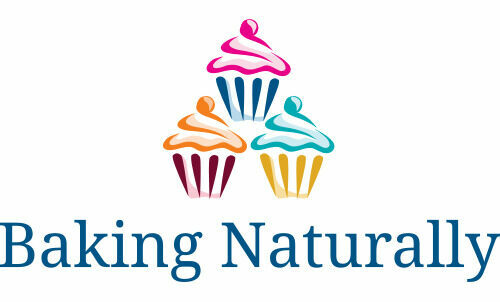
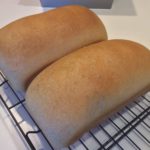
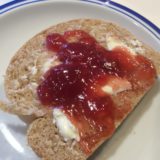

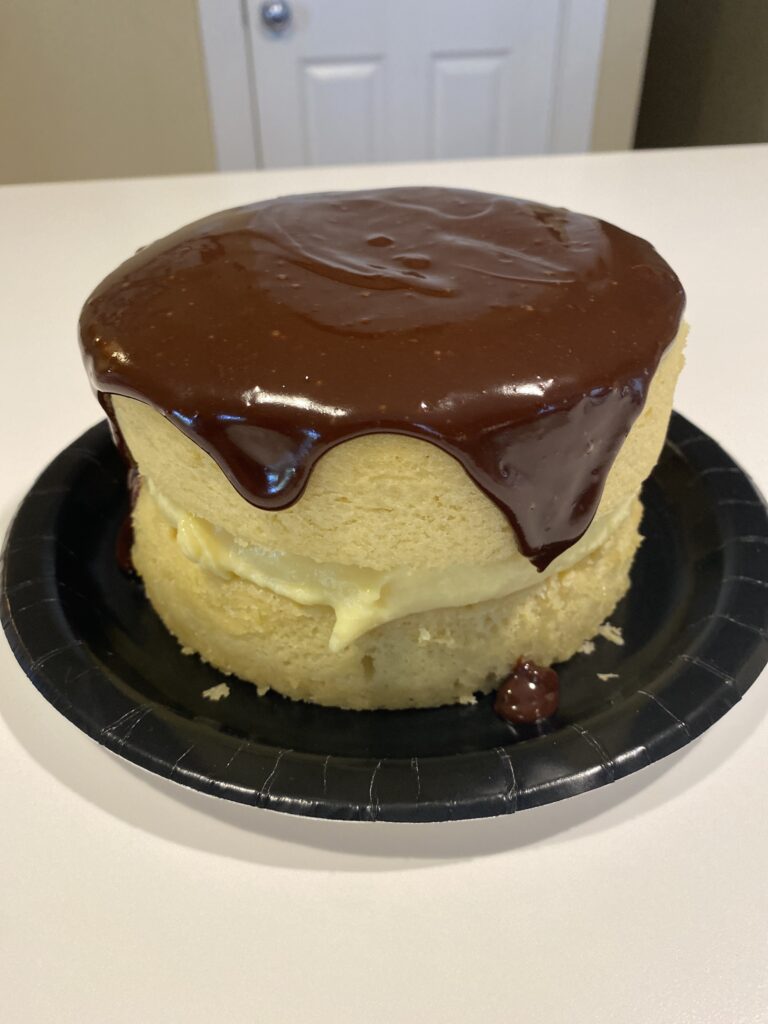


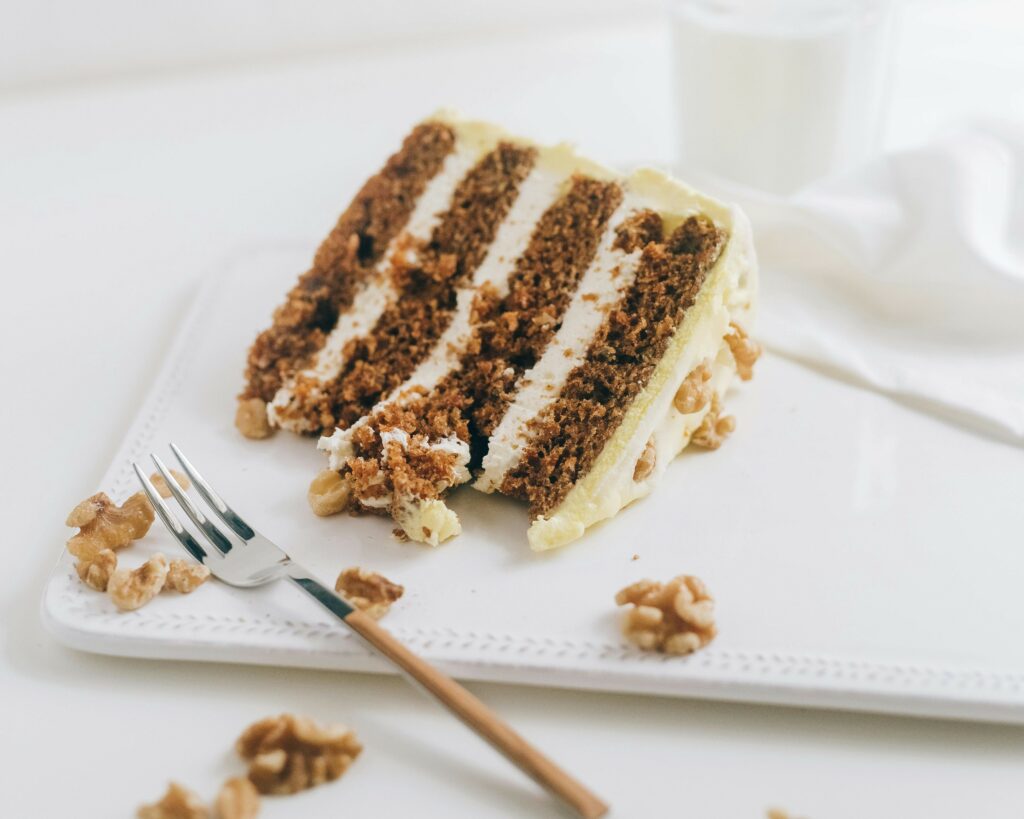

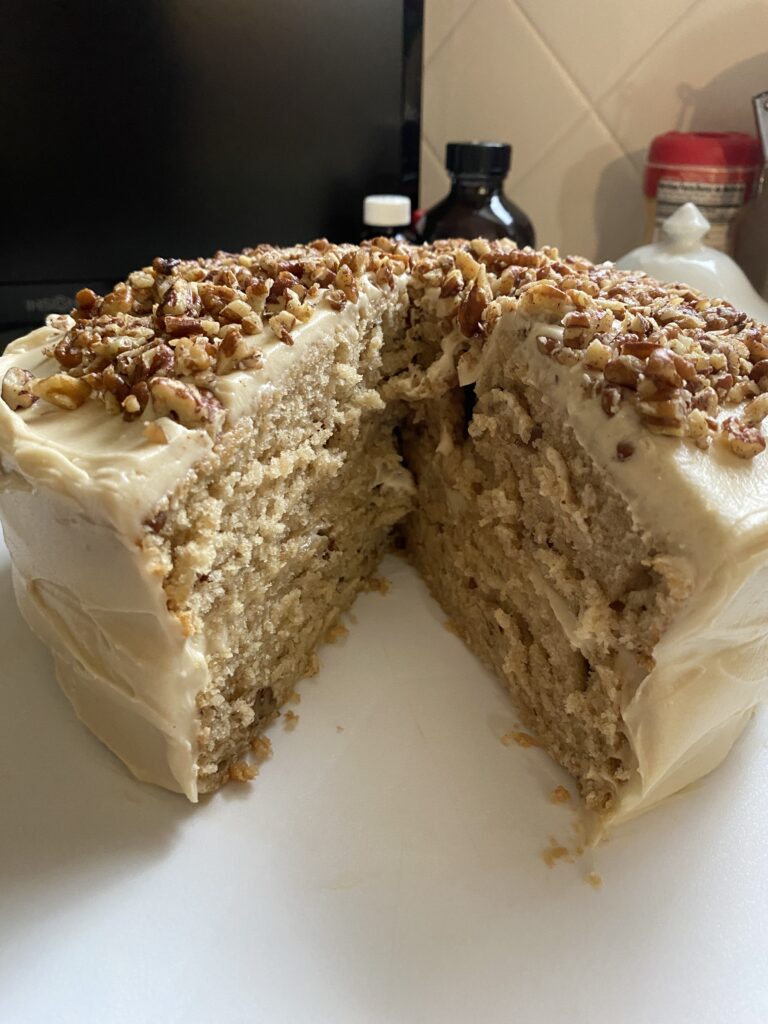
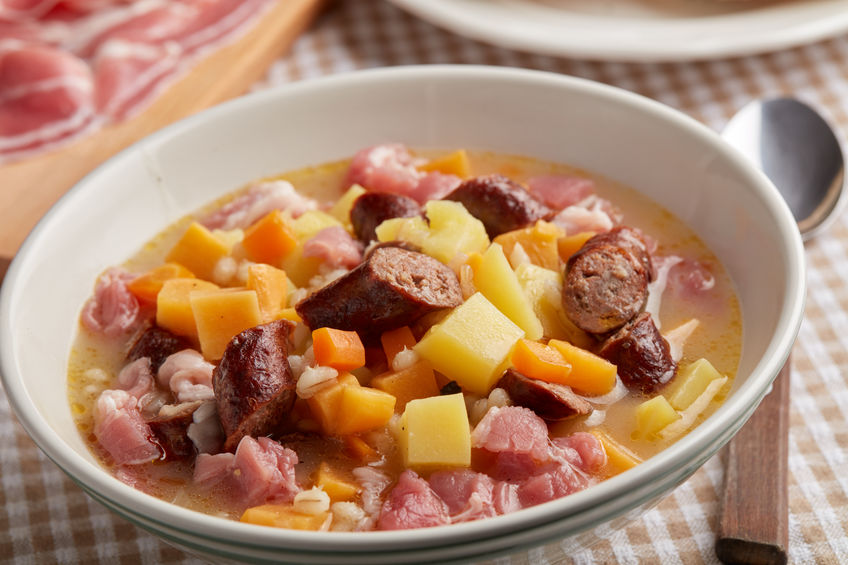
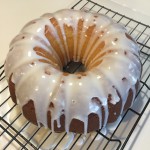
Thanks for your ideas. I live in Denver and am having difficulty with how much 0f what also. I used my Betty Crocker Bread Machine book and my Cuisinart booklet to make my loaf yesterday. I used bread flour and 1 1/4 c of the flour as whole wheat flour. I used 3T of honey and 2T of butter and 1T of oil. I used 1T and a smidgen yeast and 1T of vital yeast. I had already figured out that it’s important to wisk all the dry ingredients together and put the liquid ingredients in at 110 degrees, but I’ve always mixed the butter and the oil into the liquids, put them in first and then spoon the dry mixed ingredients on top. I tried putting the butter and oil on top, but I don’t think it mixes as well, so next time I will put it with the other liquids and not on top. I changed the water to 1 1/3 c. added 1T. of low fat milk powder. I always add 1/2cup or more of roasted pumpkin and sunflower seeds too. The loaf came out a bit smaller than most 2lb loaves, tried to change that too. Other than that it’s a better loaf than I have made. I let the baking take place in the machine too. Next time I will try to do the separate bread pans. Do you have to let the dough rise again if you put the dough in pans? lewesk
Yes, once you remove it and shape it again for your separate pans, you’ll need to let it rise again for about 45 minutes or so. Sounds lovely!
Hi Don, thank you for this article. Although I like to bake, I have never tried using any other flour than plain or self raising. After reading your post here, I would like to say that I like the sound of your bread and liked all the tips you provided for using whole wheat flour. You make it sound very easy to use.
Thanks for the comment. All-purpose is fine for plain white bread, and self-rising is a must for biscuits. But I like the heartier flavor of whole wheat for bread most of the time. Check back again!
Thanks for sharing – really informative post. It seems that more and more people are discovering their gluten intolerance. Do you know if there are any gluten substitutes which would enable a baker still use whole wheat dough?
Where the whole wheat bread with honey recipe is concerned, which would be the vegetable oil that you would most recommend as a substitute for the olive oil?
Thanks in advance, and best regards,
Norman
If you’re going to bake bread and you suffer from gluten-intolerance, you really need to change your whole outlook. You’ll never be able to use wheat flour of any kind, as it naturally forms gluten when you handle it at all – much less kneading it on purpose. Best to stick with other, non-gluten forming flours, like rice or potato. The oil I like for bread is canola (rapeseed in Europe.) It leaves almost no taste of its own, but provides fat to improve the taste and texture of your bread.